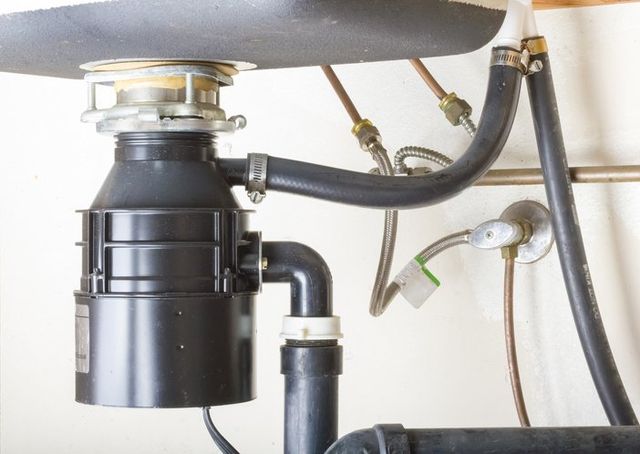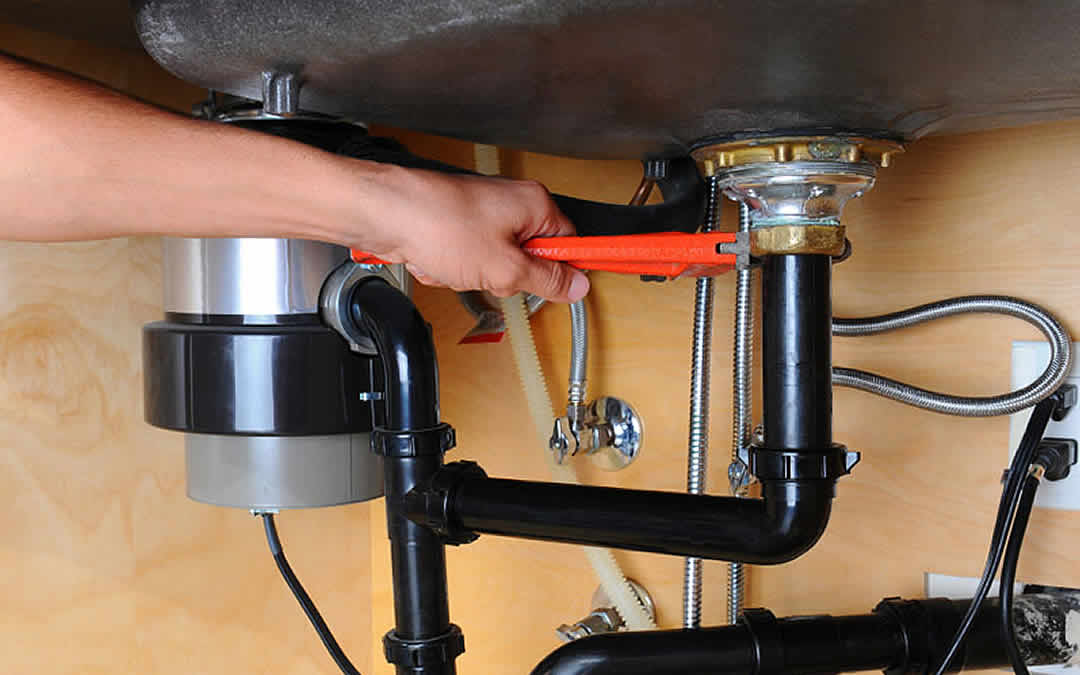Easy Ways to Repair a Leaky Waste Disposal Unit
Easy Ways to Repair a Leaky Waste Disposal Unit
Blog Article
What are your thoughts on Garbage Disposal Leaking From Bottom?

Waste disposal unit are important kitchen area appliances that assist in throwing away food waste efficiently. Nonetheless, a leaking garbage disposal can be a frustrating and unpleasant issue to handle. Luckily, many leaks can be dealt with conveniently with a few simple steps. In this write-up, we will certainly discuss exactly how to deal with a dripping garbage disposal successfully.
Intro
Waste disposal unit are installed under kitchen sinks and are created to shred food waste right into smaller sized items, permitting it to travel through the pipes system conveniently. While these tools are usually dependable, leaks can take place with time as a result of deterioration, loosened connections, or damage to the unit.
Common Sources Of Leakages in Garbage Disposals
Worn Seals and Gaskets
Seals and gaskets play a critical function in avoiding water from leaking out of the garbage disposal. Over time, these elements can wear away, resulting in leaks around the disposal system.
Loose Connections
The connections in between the garbage disposal and the plumbing system can end up being loosened over time, creating water to leak out throughout procedure.
Cracks or Holes in the Disposal Device
Physical damage to the waste disposal unit, such as fractures or holes in the housing, can likewise lead to leaks.
Determining the Source of the Leak
Prior to trying to deal with a dripping waste disposal unit, it is important to determine the source of the leak. This can generally be done through aesthetic assessment or by carrying out simple tests.
Visual Inspection
Evaluate the waste disposal unit system thoroughly for any type of signs of water leakage. Pay very close attention to areas around seals, gaskets, and link points.
Testing for Leakages
One method to test for leakages is by running water via the disposal system and looking for any visible indicators of leak.
Tools and Products Needed for Fixing a Dripping Waste Disposal Unit
Prior to beginning the repair procedure, gather the required devices and products, consisting of a screwdriver, flexible wrench, plumber's putty, substitute seals or gaskets, and epoxy or patching product for repairing cracks or openings.
Step-by-Step Overview to Dealing With a Dripping Garbage Disposal
Switch off the Power
Prior to attempting any repair work, guarantee that the power to the garbage disposal unit is turned off to stop the threat of electrical shock.
Locate the Leak
Recognize the precise location of the leak and identify the reason.
Tighten up Connections
Use a wrench to tighten up any loosened links between the disposal device and the plumbing system.
Change Seals or Gaskets
If the leak results from worn seals or gaskets, eliminate the old elements and change them with brand-new ones.
Patching Fractures or Openings
For splits or holes in the disposal device, usage epoxy or a suitable patching product to seal the broken area.
Checking the Garbage Disposal After Fixing
When the repair is total, examine the garbage disposal by running water with it to ensure that the leak has been settled.
Preventive Upkeep Tips to Prevent Future Leaks
To avoid future leakages, it is vital to do routine upkeep on your waste disposal unit. This consists of maintaining it clean, avoiding putting non-food things or difficult things down the disposal, and occasionally checking for leaks or other concerns.
Verdict
To conclude, taking care of a leaking waste disposal unit is a fairly straightforward procedure that can be finished with fundamental tools and materials. By following the steps outlined in this post and practicing precautionary maintenance, you can maintain your garbage disposal in good working condition and stay clear of expensive fixings in the future.
What to Do About a Leaking Garbage Disposal
A leaking garbage disposal often goes unnoticed until you confront a sopping cabinet, a foul-smelling puddle, or an audible drip-drip-drip from the unit. The fix can be frustrating, too, because the leak can stem from a number of components in the system. Fortunately, with a little sleuthing, you can zero in on the leak and—depending on the exact location—stop the icky oozing and repair the component that caused it. Worst case scenario, if it turns out that the garbage disposal must be replaced, installing a new one is a reasonable do-it-yourself task for those with basic plumbing skills. Read on to keep the cash you’d otherwise hand over to a pro.
Prepare to find the leak
Prior to testing the garbage disposal for leaks, unplug it at the wall outlet and turn off the power from the breaker box to prevent electrical shock. Then insert a watertight sink stopper into your sink drain and wipe the unit dry with a clean cloth. In any handy container, mix a few drops of food coloring into a few cups of water, and pour the dyed water onto the sink stopper to help you locate the leak.
Investigate the source
the top, where the disposal meets the sink drain the side, where the dishwasher hose or main drain pipe connects to the disposal or the bottom of the unit Inspect each of these locations while gliding a light-colored rag over the unit; the dyed water will readily show on the rag and reveal the location of the leak. If a leak isn’t immediately apparent, remove the sink stopper and pour a few more cups of dyed water down the sink drain, then check for leaks again. Leaks near the top of the unit are more likely to show themselves while the sink is plugged, while side and bottom leaks are more noticeable while the sink is unplugged.
The metal sink flange that sits directly inside the sink drain is typically sealed around the top with plumber’s putty (a clay-like sealant) and then secured from under the sink with bolts. If the plumber’s putty deteriorates, or the bolts loosen, the flange can no longer form a watertight seal between the sink drain and the disposal—which could cause a leak at the top of the unit.
To reseal the leaky flange, you must first detach the garbage disposal. Start by loosening the screws securing the main drain pipe to the disposal, then loosen the screws in the metal clamp securing the dishwasher hose to the disposal and detach the drain pipe and dishwasher hose from the disposal. Loosen the screws in the mounting ring that connects the disposal to the metal mounting assembly beneath the sink, then pull down the disposal and carefully set it on a clean, dry surface. Loosen the bolts in the mounting assembly with a wrench, then pull down the mounting assembly and set it near the disposal.

Do you appreciate reading up on Why Is ? Leave a comment down the page. We will be glad to find out your suggestions about this write-up. We hope that you visit us again in the near future. Sharing is nice. Helping others is fun. Bless you for your time. Visit us again soon.
Get An Estimate Report this page